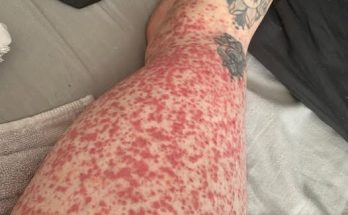Domestic violence, also known as intimate partner violence (IPV), remains one of the most serious public health and human rights issues worldwide. According to the World Health Organization (WHO), one in three women globally has experienced physical or sexual violence at the hands of an intimate partner in her lifetime. While domestic violence can affect anyone, regardless of gender, age, or socioeconomic status, women and girls continue to be disproportionately affected.
This article focuses on the importance of recognizing the signs of abuse, understanding its long-term impacts, and exploring how individuals and communities can respond effectively and safely.
What Is Domestic Violence?
Domestic violence is defined by the Centers for Disease Control and Prevention (CDC) as any form of physical, sexual, emotional, psychological, or financial abuse perpetrated by a current or former intimate partner. It can include:
Physical harm (e.g., hitting, slapping, pushing)
Emotional abuse (e.g., intimidation, isolation, name-calling)
Sexual coercion or assault
Financial control (e.g., restricting access to money or resources)
Stalking or surveillance behaviors
It is not limited to physical injuries. Many victims experience long-lasting trauma and mental health challenges due to prolonged exposure to controlling or harmful behaviors.
Federally regulated workers to get training to recognize, prevent domestic violence | CBC News
Recognizing the Signs of Abuse
Recognizing early warning signs can be the first step in intervening and protecting individuals at risk. According to NCADV, common indicators of domestic abuse may include:
Unexplained bruises, injuries, or frequent “accidents”
Isolation from friends, family, or work
Sudden changes in behavior or appearance
Constant check-ins or controlling behaviors from a partner
Fearfulness or anxiety when speaking about a partner
Withdrawal from social situations
It’s important to approach these situations with compassion, not judgment. Victims often face complex emotional and practical barriers that prevent them from leaving abusive environments.
What Is Domestic Violence – Abuse Definition – Cain and Herren
The Impact on Health and Well-Being
The consequences of domestic violence are profound and far-reaching. Victims may suffer from:
Physical injuries: from minor bruises to severe trauma or permanent disability
Mental health conditions: including depression, anxiety, PTSD, and suicidal thoughts
Chronic health problems: such as gastrointestinal disorders, reproductive issues, or substance use
Social and economic effects: like job loss, housing instability, and financial dependence
Children who witness abuse in the home are also at risk of developmental delays, behavioral issues, and a higher likelihood of experiencing or perpetrating violence later in life.
Legal Protections and Support Services
Many countries have laws and protections in place for survivors of domestic violence. These may include:
Emergency restraining orders
Victim support services and shelters
Legal aid and advocacy
Mandatory reporting and investigation procedures for medical providers
In the United States, the Violence Against Women Act (VAWA) provides federal funding and legal protections for survivors. In the European Union, the Istanbul Convention sets standards for preventing and combating violence against women.
The Evolution of Responses to Domestic Violence in Modern Society
How Communities Can Help
Domestic violence is not only a private issue—it is a societal one. Preventing abuse requires collective action from individuals, institutions, and communities. Here are key strategies:
Education and Awareness: Public campaigns can challenge harmful gender norms, promote healthy relationships, and increase knowledge of legal rights and resources.
Training for Professionals: Law enforcement, healthcare workers, educators, and social workers should be equipped to recognize signs of abuse and respond appropriately.
Safe Spaces: Schools, workplaces, and community centers should foster environments where survivors feel safe and supported.
Bystander Intervention: Friends, family, and neighbors can play a crucial role in identifying abuse and encouraging victims to seek help.
Why do some men commit domestic violence? Trauma and social isolation may play a role | Health – Hindustan Times
The Role of Digital Platforms
Social media can be a double-edged sword when it comes to domestic violence. On one hand, it offers platforms for raising awareness and connecting victims to resources. On the other hand, the spread of graphic images or unverified content related to abuse can retraumatize victims or violate Google content guidelines, especially when images are shared without context or consent.
Best practices for digital advocacy include:
Sharing content that is fact-checked and verified by reputable sources
Avoiding graphic visuals that may be triggering or exploitative
Including support hotline numbers or resource links
Using hashtags responsibly to amplify awareness without sensationalism
World cup: Women prepare for increased domestic abuse | Article, News | News | UNISON National
Global Perspective: Progress and Challenges
According to UN Women, domestic violence intensified during the COVID-19 pandemic, with many countries reporting a rise in helpline calls and emergency shelter use. Despite growing awareness, significant gaps remain in access to justice, support services, and survivor-centered policies—especially in marginalized communities.
Global initiatives like the UNiTE Campaign to End Violence Against Women and #16Days of Activism continue to spotlight the need for stronger protections and comprehensive strategies.
Coronavirus: Isle of Man’s domestic abuse rate rises 21% during pandemic
Conclusion: A Call for Action
Domestic violence remains a global issue that requires urgent, informed, and compassionate responses. Whether through education, policy change, or individual support, we each have a role to play in ending abuse and promoting safety and dignity for all.
Verified Sources:
World Health Organization (WHO) – Violence Against Women
CDC – Intimate Partner Violence
National Coalition Against Domestic Violence (NCADV)
UN Women – Ending Violence Against Women
Office on Violence Against Women (OVW) – U.S. Department of Justice
Post Views: 111
Domestic violence, also known as intimate partner violence (IPV), remains one of the most serious public health and human rights issues worldwide. According to the World Health Organization (WHO), one in three women globally has experienced physical or sexual violence at the hands of an intimate partner in her lifetime. While domestic violence can affect anyone, regardless of gender, age, or socioeconomic status, women and girls continue to be disproportionately affected.
This article focuses on the importance of recognizing the signs of abuse, understanding its long-term impacts, and exploring how individuals and communities can respond effectively and safely.
What Is Domestic Violence?
Domestic violence is defined by the Centers for Disease Control and Prevention (CDC) as any form of physical, sexual, emotional, psychological, or financial abuse perpetrated by a current or former intimate partner. It can include:
Physical harm (e.g., hitting, slapping, pushing)
Emotional abuse (e.g., intimidation, isolation, name-calling)
Sexual coercion or assault
Financial control (e.g., restricting access to money or resources)
Stalking or surveillance behaviors
It is not limited to physical injuries. Many victims experience long-lasting trauma and mental health challenges due to prolonged exposure to controlling or harmful behaviors.
Federally regulated workers to get training to recognize, prevent domestic violence | CBC News
Recognizing the Signs of Abuse
Recognizing early warning signs can be the first step in intervening and protecting individuals at risk. According to NCADV, common indicators of domestic abuse may include:
Unexplained bruises, injuries, or frequent “accidents”
Isolation from friends, family, or work
Sudden changes in behavior or appearance
Constant check-ins or controlling behaviors from a partner
Fearfulness or anxiety when speaking about a partner
Withdrawal from social situations
It’s important to approach these situations with compassion, not judgment. Victims often face complex emotional and practical barriers that prevent them from leaving abusive environments.
What Is Domestic Violence – Abuse Definition – Cain and Herren
The Impact on Health and Well-Being
The consequences of domestic violence are profound and far-reaching. Victims may suffer from:
Physical injuries: from minor bruises to severe trauma or permanent disability
Mental health conditions: including depression, anxiety, PTSD, and suicidal thoughts
Chronic health problems: such as gastrointestinal disorders, reproductive issues, or substance use
Social and economic effects: like job loss, housing instability, and financial dependence
Children who witness abuse in the home are also at risk of developmental delays, behavioral issues, and a higher likelihood of experiencing or perpetrating violence later in life.
Legal Protections and Support Services
Many countries have laws and protections in place for survivors of domestic violence. These may include:
Emergency restraining orders
Victim support services and shelters
Legal aid and advocacy
Mandatory reporting and investigation procedures for medical providers
In the United States, the Violence Against Women Act (VAWA) provides federal funding and legal protections for survivors. In the European Union, the Istanbul Convention sets standards for preventing and combating violence against women.
The Evolution of Responses to Domestic Violence in Modern Society
How Communities Can Help
Domestic violence is not only a private issue—it is a societal one. Preventing abuse requires collective action from individuals, institutions, and communities. Here are key strategies:
Education and Awareness: Public campaigns can challenge harmful gender norms, promote healthy relationships, and increase knowledge of legal rights and resources.
Training for Professionals: Law enforcement, healthcare workers, educators, and social workers should be equipped to recognize signs of abuse and respond appropriately.
Safe Spaces: Schools, workplaces, and community centers should foster environments where survivors feel safe and supported.
Bystander Intervention: Friends, family, and neighbors can play a crucial role in identifying abuse and encouraging victims to seek help.
Why do some men commit domestic violence? Trauma and social isolation may play a role | Health – Hindustan Times
The Role of Digital Platforms
Social media can be a double-edged sword when it comes to domestic violence. On one hand, it offers platforms for raising awareness and connecting victims to resources. On the other hand, the spread of graphic images or unverified content related to abuse can retraumatize victims or violate Google content guidelines, especially when images are shared without context or consent.
Best practices for digital advocacy include:
Sharing content that is fact-checked and verified by reputable sources
Avoiding graphic visuals that may be triggering or exploitative
Including support hotline numbers or resource links
Using hashtags responsibly to amplify awareness without sensationalism
World cup: Women prepare for increased domestic abuse | Article, News | News | UNISON National
Global Perspective: Progress and Challenges
According to UN Women, domestic violence intensified during the COVID-19 pandemic, with many countries reporting a rise in helpline calls and emergency shelter use. Despite growing awareness, significant gaps remain in access to justice, support services, and survivor-centered policies—especially in marginalized communities.
Global initiatives like the UNiTE Campaign to End Violence Against Women and #16Days of Activism continue to spotlight the need for stronger protections and comprehensive strategies.
Coronavirus: Isle of Man’s domestic abuse rate rises 21% during pandemic
Conclusion: A Call for Action
Domestic violence remains a global issue that requires urgent, informed, and compassionate responses. Whether through education, policy change, or individual support, we each have a role to play in ending abuse and promoting safety and dignity for all.



